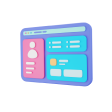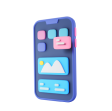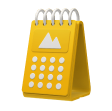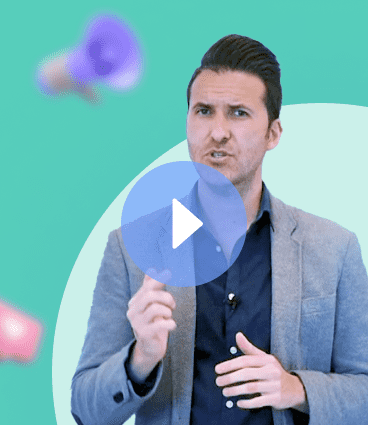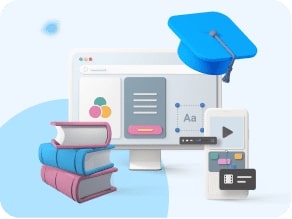TABLE OF CONTENTS
Developing a mobile application can be a great challenge, and common mistakes when developing an app can affect its success. In this article, we will explore common mistakes made when creating an app and offer tips on how to avoid them. By knowing these mistakes, you can better plan your project and increase the chances of your application being well received by users.
Key Points
- Conduct market research before starting development.
- Set a realistic and flexible budget.
- Ensure that the briefing with your team is clear and precise.
- Avoid including too many features in your app; prioritize simplicity.
- Consider your target audience when choosing platforms for your app.
Lack of Research and Testing
When we dive into developing an app, one of the most common mistakes we can make is not dedicating enough time to research and testing. This can lead us to create an application that does not meet the needs of users. Here’s why it’s so important to research and test before launching to the market.
Importance of Market Research
Before we start programming, it is crucial to understand our target audience. This includes:
- Identifying the needs of users.
- Analyzing the competition to see what they are doing well and what not.
- Clearly defining the objectives of our app.
Without this information, we run the risk of creating something that does not resonate with users. Remember, a common mistake is the lack of clear and measurable objectives. Without a defined goal, it is difficult to assess whether our strategy is working or not.
Testing on Different Devices
Once we have a clear idea, it’s time to test. Testing is essential to ensure that our app works correctly on different devices and operating systems. Here are some things to consider:
- Conduct tests on various devices (mobiles, tablets, etc.).
- Check compatibility with different operating systems (iOS, Android).
- Ensure that the app is intuitive and easy to use.
User Feedback
Finally, we cannot forget the importance of feedback. Once we have a beta version, it is essential:
- To gather opinions from real users.
- To make adjustments based on their feedback.
- To conduct usability tests to improve the user experience.
In summary, dedicating time to research and testing not only improves the quality of our app but also increases the chances of success in the market. Don’t underestimate this stage!
Unrealistic Budget

When we set out to develop an app, one of the most common mistakes is having an unrealistic budget. Here’s how to avoid it.
Cost Estimation
First, it is essential that we make a realistic cost estimation. This includes:
- Development: How much will the developers’ work cost?
- Design: What investment will the interface design require?
- Marketing: How much do we need to promote our app?
| Concept | Estimated Cost |
|---|---|
| Development | $20,000 |
| Design | $5,000 |
| Marketing | $5,000 |
| Total | $30,000 |
Resource Allocation
Let’s not forget to allocate resources appropriately. This means:
- Hiring a good team: Don’t skimp on talent.
- Including an emergency fund: Unexpected issues can always arise.
- Planning updates: Apps need constant maintenance.
Budget for Updates
Finally, it is crucial that we reserve part of our budget for future updates. Apps are living products that require:
- Bug fixes
- New features
- Improvements to the interface
Remember, a good budget is the foundation for your app’s success. If we don’t plan it well, we could end up with an app that doesn’t meet our expectations. So let’s get to work on it!
Unclear Briefing
When we are developing an app, an unclear briefing can be a real headache. It is essential that everyone on the team understands the objectives and requirements from the beginning. Here are some key points to avoid confusion:
Effective Communication with the Team
- Regular meetings: Keep everyone informed about progress and resolve doubts.
- Clear documentation: Write down all agreements and changes to avoid misunderstandings.
- Use management tools: Facilitate collaboration and keep everyone organized.
Defining Clear Objectives
- Set specific goals: Know exactly what we want to achieve with the app.
- Prioritize features: Don’t try to cover too much from the start.
- Visual examples: Use mockups or wireframes to illustrate the idea.
Detailed Documentation
- Specify technical requirements: Detail the operating system and necessary integrations.
- Define deadlines and milestones: Keep everyone on the right track.
- Encourage feedback: Allow everyone to participate in the development process.
Having a clear briefing is key to the success of our app. This minimizes risks and ensures that we are all aligned on the same objective. In the end, good communication and documentation will save us many problems in the future.
Remember, a good briefing is the foundation of successful development. Don’t underestimate it!
Including Too Many Features
When we are developing an app, sometimes we get excited and want to include all the features that come to mind. But do we really need that many? Here’s why it’s better to avoid this mistake.
Simplicity and Usability
The key to a good app is simplicity. If we include too many functions, we can:
- Confuse users.
- Make the app slower.
- Hinder navigation.
Key Features
Instead of cramming the app with options, it’s better to focus on the features that really matter. Some of the most important are:
- User registration.
- Notifications.
- Search functions.
Usability Testing
Before launching the app, it is essential to conduct usability tests. This will help us understand if users can navigate easily and if the functions are useful. Remember, less is more.
In summary, when developing an app, we should focus on the essentials and avoid feature overload. This not only improves the user experience but also facilitates the development and maintenance of the app.
If we don’t want to fall into the trap of including too many features, it is crucial to conduct market research and understand what our users really need. This way, we avoid the risk of creating an app that does not meet their expectations. Let’s make our app useful and easy to use!
Choosing Unnecessary Operating Systems

When we are developing an app, one of the most common mistakes is choosing unnecessary operating systems. This can lead to a waste of resources and time. Here’s how to avoid it.
Know Your Target Audience
It is essential to understand who your app is aimed at. Ask yourself:
- What devices do your users use?
- What operating system do they prefer?
- What features are important to them?
Platform Evaluation
Before jumping into developing for multiple operating systems, consider the following:
- iOS: Ideal if your audience is in North America or Europe.
- Android: Perfect for emerging markets and a wider variety of devices.
Resource Optimization
Don’t waste resources on operating systems that do not add value. Here are some recommendations:
- Start with a single platform.
- Evaluate the performance and acceptance of your app.
- Expand to other platforms only if necessary.
Remember, not all platforms are relevant for your app. Research well before deciding.
In the end, wisely choosing the operating system can make the difference between the success and failure of your application. Don’t rush!
Not Treating the App as a Business
When we think about creating an app, we often focus only on development and forget that we should treat it as a business. This is key to its success. Here are some points we should consider:
Business Strategy
- Define a clear business model: How will we generate revenue? Advertising, direct sales, subscriptions?
- Set short and long-term goals: This will help us stay on track and measure success.
- Analyze the competition: Seeing what others are doing in the market can give us ideas and warnings.
App Monetization
- Explore different monetization methods: From ads to in-app purchases.
- Consider the value we offer: Why should users pay for our app?
- Conduct price testing: Sometimes, a small adjustment can make a big difference in revenue.
Long-Term Vision
- Plan updates and improvements: Apps need to evolve to remain relevant.
- Collect and analyze user data: This will help us understand what works and what doesn’t.
- Maintain constant communication with users: Listening to their opinions can guide us in future development.
In summary, when approaching app development, we should not only think about the code and design but also about how to turn it into a profitable business. This includes having a clear strategy, exploring monetization options, and thinking long-term.
Ineffective User Interface
When we talk about the user interface (UI), it is essential that it is clear and easy to use. If not, we run the risk of frustrating our users and having them abandon the app. Here are some key points we should consider:
Intuitive Design
- Simplicity: The interface should be simple and straightforward. If users cannot find what they are looking for quickly, they are likely to leave.
- Visual hierarchy: Use different sizes and colors to highlight important elements. This helps guide the user through the app.
- Consistency: Maintain a coherent design across all screens so that users feel comfortable and familiar.
Accessibility
- Compatibility: Ensure that the app is accessible to everyone, including people with disabilities. This may include alternative text for images and contrast options.
- Button size: Buttons should be large enough to be easily tapped, especially on mobile devices.
- Accessibility testing: Conduct tests with users who have different needs to identify areas for improvement.
Interface Testing
- User feedback: Gather user opinions about the interface and make adjustments based on their comments.
- A/B testing: Test different versions of the interface to see which works best.
- Usage analysis: Use tools that allow us to see how users interact with the app and where problems arise.
“A good user interface is not only attractive but also functional and easy to use. This can make the difference between a successful app and one that is quickly forgotten.”
In summary, taking care of the user interface is key to keeping our users happy and engaged. If we manage to make the experience smooth and enjoyable, we will increase the chances of success for our app.
An ineffective user interface can frustrate users and cause them to abandon your application. If you want to improve your customers’ experience, visit our website and discover how to create applications, funnels, and websites without needing to know how to code. Try it free for 7 days!
Conclusion
In summary, developing an app can be a path full of obstacles, but if you avoid common mistakes, your project has a much higher chance of succeeding. Always remember to conduct good research and testing before launching your application. It is also key to have a realistic budget and not overload your app with unnecessary features. In the end, the most important thing is that your app meets the needs of users and offers a pleasant experience. So, let’s get to work and create something amazing!
